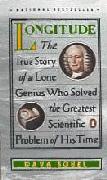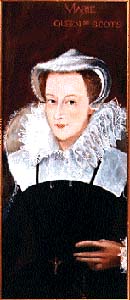

 |
Yes! It's finally out! If you've already read the Belgariad and Mallorean series you've probably long awaited this prequel. I know I did. Finally we get to hear Polgara's side of the epic. It is every bit as good as the preceding Belgarath with Polgara's unerringly sharp tongue. I can easily recommend this to read. Be warned….it's huge, just like the rest of Eddings' books. |
 |
If you're not familiar with the series that spawned this book, and you enjoy thousands and thousands of pages of lyrical epic fantasy, I can recommend Eddings as an author to watch for. This particular series is especially one to watch for as it is completed. Eddings one failing as an author is a deplorable habit of ending books with his characters hanging off the edges of cliffs with vultures swooping and diving all around. This can be maddening since it might be two or four years until he publishes the sequel. However, if you liked the Thomas Covenant books, these are better. |

|
This is out on paperback, and if you like Spider Robinson (if you don't, what planet are you from??), this is a treat. Not quite up to the standard of some of his more mind-bending works like the StarDancer series, it is still filled with some conceptual ideas that are interesting. I particularly liked one of the character's assertions that kindness outweighs intelligence on the quality of our fellow human's scale. |
 |
Oh, boy! Science book! My friend Jack, who has wonderfully eclectic tastes in reading material, gave me this little treasure. The text reads like fiction, but is the history of the discovery of reliable tracking of Longitude. If you're like me, you might be saying, like..what? This is a problem? Well, it is. Latitude is reasonably easy to calculate from the equator and the sun and stuff….you know, the world turns, and calculating against the earth's rotational axis is reasonably simple. (Alright all right…I have NO idea how to do it myself, but that doesn't matter because I get lost crossing the street. It's a gift. You wouldn't want me to calculate anything like that. Trust me.) |
 |
While the story wrapped around this concept in ultra super cold temperature chemistry (the K in the title stands for Kelvin) is a bit spacious, the end blow off (if you've read the book already, stop guffawing at the pun) is well worth the time it takes to get into. Set on a meteor way way way out from Earth, the story surrounds a small alien village uncannily like Earth's medieval England. The characters are tiny shrimp-like creatures that have welcomed a team of much insulated Terrans to study them. In the course of the story, you are subjected to a lot of chemistry. This is essential to the story itself, so don't skip those parts. |
 |
Just to sum up, Mary was crowned Queen of Scotland a few days after she was born. Her mother, the Dowager Queen, served as Regent and sent her off to France to be educated and to grow up with her betrothed, the Dauphin. It would have worked out great if Francios had been a little more robust, but after only a year or so of marriage, he died. By this time, Mary's mother had also died, leaving Scotland governed by Mary's older half-brother, a Protestant. Mary, incidentally, was profoundly Catholic. Mary also saw the writing on the wall when her mother in law, Catherine de Medici became the Regent of France. Catherine hated Mary. Mary prudently thought that being anywhere except France might be a Good Idea. So she went back to Scotland, where she was not exactly welcomed, being Catholic as she was. |